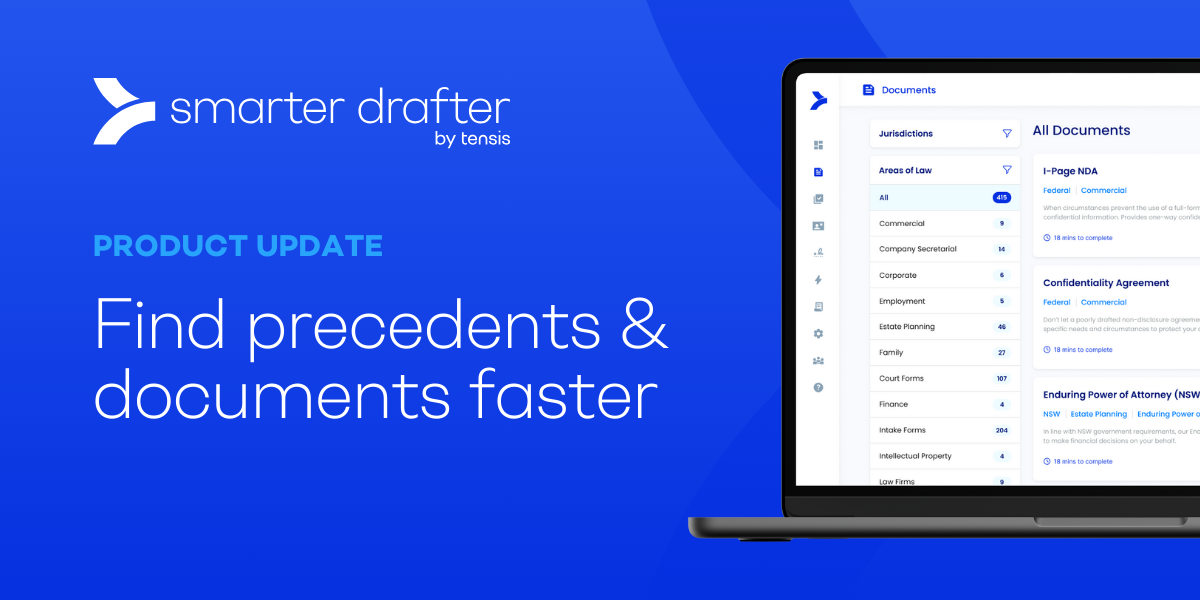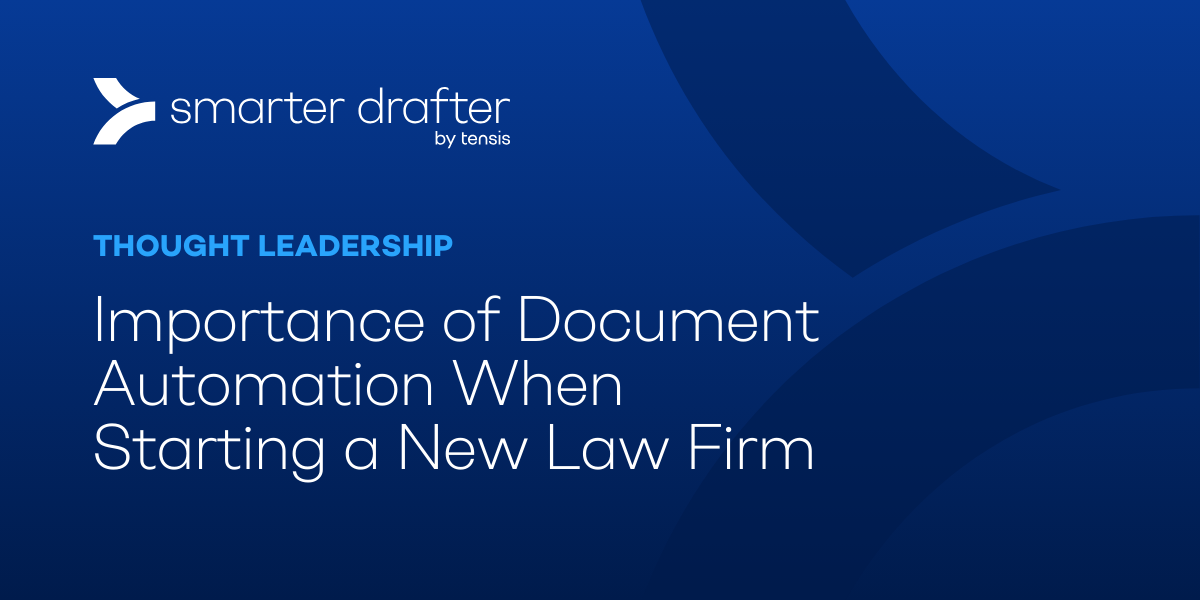The latest update to Smarter Drafter has just dropped and is available now for all users.
When Form-Filling Isn’t Enough: The Rise of Data-Driven Automation in Law Firms
Legal automation has come a long way. From Word-based templates to guided questionnaires and client portals, firms have steadily reduced the manual overhead involved in document production.
But there’s a ceiling to how far you can scale with human-triggered automation alone.
Data-Driven Automation (DDA) represents the next evolution, and it's already transforming how law firms deliver high-volume, high-complexity services, especially in commercial and outsourced legal operations.
What Is Data-Driven Automation?
While lawyer and client-driven automation rely on someone entering data through a form or portal, DDA removes the human step entirely.
Instead, Smarter Drafter connects directly to your firm's practice management system (PMS) or other business applications. When new data is created or updated, for example a matter opens or a case status changes, that event can automatically trigger document generation.
No logins. No questionnaires. No delays.
The Three Modes of Automation
|
Mode |
Who Triggers It |
How It Works |
|
Lawyer-Driven |
Internal legal team |
Lawyer completes a Q+A form |
|
Client-Driven |
External party (client) |
Client submits data via branded web portal |
|
Data-Driven |
A connected system |
API sends structured data → document generated |
Law firms typically start with lawyer-driven automation, add client-driven workflows as their maturity increases, and eventually unlock data-driven automation for maximum scale.
Why Law Firms Are Moving to DDA
1. It’s Built for High-Volume Legal Work
If your firm handles hundreds (or thousands) of similar documents, for example debt recovery notices, disclosure statements, or financial templates, then DDA changes everything. Once set up, Smarter Drafter can create documents in the background, as often as needed, with no bottlenecks.
Example: In one top-tier firm, a DDA implementation in the recoveries team is projected to save over $2 million per year in staff time and rework.
2. It Handles High Complexity, Not Just Repetition
Unlike basic document generation tools, Smarter Drafter’s logic engine supports:
- Clause selection based on multiple variables
- Branching logic across large document packs
- Complex calculations, pluralisation, and formatting rules
- Seamless integration with your existing precedent library
This means you can use DDA not just for letters, but for bundled, multi-party, multi-stage legal documents that need to be right the first time.
3. It Keeps Lawyers in the Loop—When It Matters
Smarter Drafter’s DDA model isn’t a black box. Lawyers can review, adjust, and finalise documents using the same tools they know, Microsoft Word and the Clause Bank. You retain editorial control while removing the repetitive work.
Think of DDA as “automation-first, lawyer-finished”.
4. It Reduces Risk and Increases Consistency
When documents are triggered by structured data, you eliminate:
- Manual rekeying (and the errors that come with it)
- Version control issues across practice groups
- Delays caused by bottlenecks in admin workflows
Everything is built from the same approved logic and clauses. Every output is client-facing, court-ready, and formatted to your firm’s standards.
Who Benefits Most from DDA?
While DDA offers benefits across all practice areas, it’s especially powerful for:
- Commercial teams offering outsourced or high-volume services
- Recoveries and enforcement teams producing repeatable packs
- Financial services practices generating templated notices or disclosures
- Regulatory teams issuing formal responses, approvals, or actions
- Bulk onboarding or compliance projects requiring speed and consistency
In short: if you already know the data, and you already know the rules, you shouldn’t be building the document manually.
DDA in Action: The Workflow
- Structured data is created or updated (e.g. new matter, client file, or court status)
- That triggers a pre-mapped automation in Smarter Drafter
- The document(s) are generated instantly using the firm’s logic and templates
- A lawyer reviews, adjusts, and sends via your usual workflow (email, DMS, eSignature)
Why Now?
The technology is ready. The data is already in your systems. And most firms are under pressure to do more with less, without compromising accuracy or reputation.
DDA is the natural next step for firms that have outgrown user-driven form-fillers and want to build repeatable, scalable legal operations.
If your firm has strong precedents, centralised client and matter data, and a culture of innovation, then you’re ready for DDA.
Smarter Drafter makes it possible to turn that data into action, automatically, securely, and at scale.



